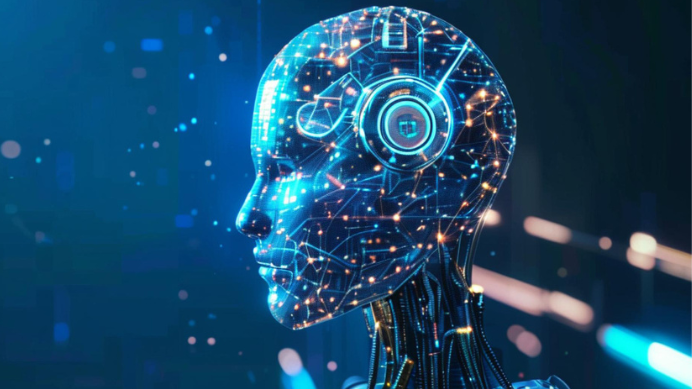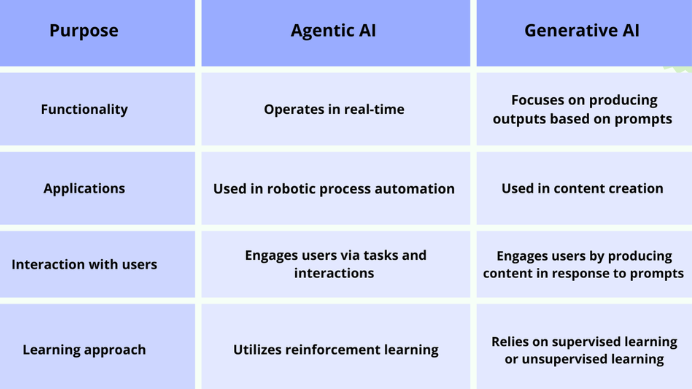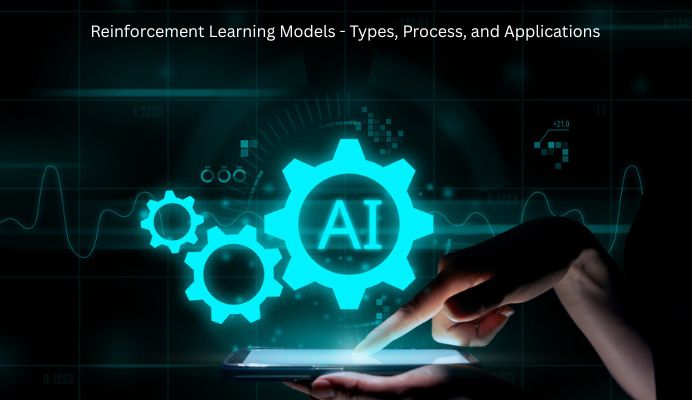
What is Agentic AI? – A Complete Guide
Agentic AI is an advanced form of artificial intelligence that autonomously makes decisions and takes actions with minimal human input. Unlike traditional AI, it continuously learns and adapts.
Agentic AI represents a groundbreaking shift in how AI automation functions, offering unprecedented autonomy and adaptability. By operating independently and making decisions with minimal human intervention, these AI agents are transforming the landscape of enterprise systems.
What is an AI agent?
An AI agent is a software program or system that is capable of autonomously performing tasks on behalf of a user or another system. These agents are designed to interact with their environment, collect data, and make decisions based on that data to achieve specific goals set by humans.
Agentic AI vs Generative AI – What is the difference?
The debate between Agentic AI vs Generative AI is an interesting one. Let’s look at some of the key differences here.

1. Functionality
- Agentic AI: Operates in real-time and interacts with the environment. Makes decisions and takes actions based on its programming and learned experiences. Often involves reinforcement learning and decision-making algorithms.
- Generative AI: Focuses on producing new outputs rather than interacting with the environment. Generates content based on prompts or inputs, utilizing techniques like deep learning. Primarily uses models like Generative Adversarial Networks (GANs) or transformer architectures.
2. Applications
- Agentic AI: Used in applications like robotic process automation, autonomous vehicles, and interactive gaming characters. Aims to enhance efficiency, decision-making, and user interaction.
- Generative AI: It is used in creative fields for content creation, including writing, art, music, and video production. Generative AI aims to augment creativity and provide new ways to generate ideas or media.
3. Interaction with users
- Agentic AI: Engages users through tasks and interactions, often adapting based on user feedback and behavior.
- Generative AI: Engages users primarily by producing content in response to requests or prompts, with less emphasis on ongoing interactions.
4. Learning approach
- Agentic AI: Utilizes reinforcement learning, where agents learn to make decisions by receiving feedback from their actions (rewards or penalties). Agentic AI employs techniques that allow it to adapt and optimize its behavior based on real-time data and experiences.
- Generative AI: Primarily relies on supervised learning or unsupervised learning, training on large datasets to understand patterns and generate new data. Generative AI focuses on modeling the probability distribution of the training data to create novel outputs.
Getting started with Agentic AI
Implementing Agentic AI starts with integrating Agentic AI into existing enterprise systems frameworks. This integration bridges gaps between isolated systems, creating a unified framework that enhances data processing and workflow management.
Advanced Agentic AI platforms offer user-friendly interfaces, allowing nontechnical users to interact with and customize the AI without extensive expertise. This accessibility ensures that the benefits of Agentic AI are not limited to tech-savvy individuals but are available to a broader range of users.
AI development companies like Addepto can guide businesses through the implementation process, from consultation to execution. These services offer measurable results, helping organizations track AI effectiveness and make necessary adjustments.
Starting with small, manageable projects helps organizations build confidence and expertise in working with Agentic AI. As comfort with technology grows, efforts can scale and more complex applications can be explored. This phased approach ensures a smoother transition and minimizes risks linked to large-scale AI implementations.
What is a multi-agent system in AI?
A multi-agent system is an AI system composed of multiple independent entities, called agents, that interact within a shared environment to achieve specific goals. Depending on the system’s design and objectives, these agents can either collaborate or compete.
How do AI agents differ from traditional AI systems?
Unlike traditional AI systems that are bound by strict rules, agentic AI systems can learn and adapt, becoming more advanced and capable of handling complex tasks. An AI agent can enhance these processes further, especially when considering agentic AI vs. traditional AI.
One of the key differentiators of Agentic AI is its ability to manage complex multi-step processes adaptively. Traditional AI systems often struggle with tasks requiring a nuanced understanding of context and multiple decision-making stages.
In contrast, Agentic AI’s flexibility comes from its ability to reason, perceive its environment, and take autonomous actions based on contextual understanding.
How to build AI agents for beginners?
The ways to build AI agents for beginners are:
Step 1: Define the purpose of your AI agent
Before diving into the technical aspects, it’s crucial to clearly outline the purpose of your AI agent. Ask yourself:
- What problem will it solve?
- Who will use it?
- What kind of interactions will it have with users?
Identifying the purpose will guide your design and development process.
Step 2: Choose the right tools and frameworks
There are several tools and frameworks available for building AI agents. Some popular options include:
- Natural Language Processing (NLP) Libraries: Libraries like SpaCy can help you process and understand human language.
- Machine Learning Frameworks: TensorFlow and PyTorch are excellent for building and training models.
- Agent Frameworks: Tools like Rasa or Microsoft Bot Framework can simplify the development of conversational agents.
Step 3: Gather and prepare data
To train your AI agent effectively, you need to gather data that reflects the kind of interactions it will have. This could include:
- Text transcripts: Collect conversations from chat logs, support tickets, or emails that are similar to the expected interactions.
- Structured data: Depending on your agent’s purpose, you might need structured datasets for training.
Make sure to clean and preprocess this data to ensure quality input for your models.
Step 4: Build the AI model
Once you have your data, you can start building your AI model. This involves:
- Choosing a model architecture: Depending on your task, you might choose a simple rule-based model or a more complex neural network.
- Training the model: Use your prepared data to train the model. This step may require tuning hyperparameters to improve performance.
Step 5: Implement the Agent logic
After training your model, you need to implement the logic that will allow your agent to interact with users. This includes:
- Defining intents and entities: For conversational agents, you need to define what users might say (intents) and the key pieces of information (entities) your agent should extract.
- Creating response templates: Design how your agent will respond to different inputs.
Step 6: Test and Iterate
Testing is a critical phase in the development of your AI agent. You should:
- Conduct user testing: Gather feedback from real users to identify areas for improvement.
- Iterate on your design: Use the feedback to refine your agent’s capabilities and user experience.
Step 7: Deploy your AI agent
Once you are satisfied with your AI agent’s performance, it’s time to deploy it. Consider:
- Choosing a platform: Decide where your agent will live (e.g., a website, mobile app, or messaging platform).
- Monitoring performance: After deployment, continuously monitor your agent’s interactions to ensure it performs well and adjust as necessary.
Can AI agents be integrated with existing enterprise systems?
Yes, AI agents can indeed be integrated with existing enterprise systems, and this integration can significantly enhance operational efficiency and productivity.
They are designed to autonomously perform tasks on behalf of users or systems, which makes them highly adaptable for various business functions. They can observe, plan, and act autonomously, facilitating end-to-end transformation across industries.
Integrating AI agents often involves connecting them to enterprise systems, APIs, and databases. This connectivity enables the agents to access and analyze data effectively, which is crucial for generating accurate responses and actions.
Furthermore, the rise of agent orchestration platforms is pushing enterprises to adopt new integration approaches that go beyond traditional systems.

Benefits of Agentic AI
Implementing Agentic AI brings a myriad of benefits, transforming how organizations operate. Let’s look at some of the key benefits
1. Enhanced decision making
Autonomous AI agents handle vast amounts of data streams in real time. They deliver actionable insights that are essential for informed decision-making. These advanced decision-making frameworks utilize rule-based systems and models to ensure choices are well-informed and data driven decisions. This allows organizations to tackle complex problems with greater precision and confidence.
However, incorporating human oversight mitigates risks and ensures transparency. Transparent decision logs and real-time monitoring track AI decisions, minimizing deviations from intended purposes. This oversight is vital, especially when dealing with sensitive data and complex scenarios.
2. Increased operational efficiency
The integration of multiple AI technologies enables Agentic AI to manage and automate complex workflows effectively. By automating routine tasks and optimizing workflows, future Agentic AI systems are expected to enhance human productivity and streamline software development processes.
Successful implementation begins by identifying repetitive tasks suitable for automation. Gathering, cleaning, and formatting data with Agentic AI reduces human workload, allowing focus on strategic initiatives. This automation of complex tasks not only saves time but also reduces business operations costs and improves overall efficiency, streamlining business processes and enabling teams to execute tasks more effectively.
3. Improved customer interactions
Agentic AI understands customer intent and emotion, allowing it to resolve issues autonomously and create personalized user experiences.
Moreover, Agentic AI utilizes Data Cloud and retrieval augmented generation (RAG) to enhance its customer service functions. These technologies enable the AI to access diverse data sources and provide precise, context-aware responses. Automating complex workflows with Agentic AI improves customer interactions and boosts employee productivity by eliminating repetitive tasks.
Use cases of Agentic AI
Below are some of the key use cases where Agentic AI is making a significant impact:
1. Healthcare
In the healthcare sector, Agentic AI is transforming revenue cycle management by optimizing billing processes and streamlining claims. By automating these routine tasks, healthcare providers can reduce administrative burdens and focus more on patient care.
Additionally, Agentic AI assists in predictive analytics, which helps in diagnosing diseases early and personalizing treatment plans, thus improving patient outcomes.
2. Finance
Agentic AI plays a crucial role in the finance industry, particularly in fraud prevention. By analyzing vast amounts of transaction data in real-time, these AI systems can identify anomalies and fraudulent activities, providing a robust defense mechanism against financial crimes.
Furthermore, Agentic AI supports risk assessment by analyzing market trends and financial data, enabling financial institutions to make informed decisions and enhance their investment strategies.
3. Logistics
In logistics, Agentic AI improves operational efficiency through dynamic route planning and real-time adjustments. This ensures timely deliveries, reduces operational costs, and enhances customer satisfaction.
By optimizing supply chain management, Agentic AI helps businesses maintain a competitive edge in the fast-paced logistics industry.
4. Retail
Retailers benefit significantly from Agentic AI, which personalizes shopping experiences by predicting customer preferences and adjusting recommendations in real time.
This personalization not only enhances customer satisfaction but also increases sales. Additionally, Agentic AI automates inventory management and demand forecasting, helping retailers maintain optimal stock levels and reduce waste.
Looking to the future, trends like AI-to-AI collaboration and the development of fully autonomous businesses highlight the transformative potential of Agentic AI. AI automation companies that embrace these advancements will be well-positioned to thrive in an increasingly complex and dynamic world.
As we continue to explore the possibilities of Agentic AI, one thing is clear: the future of AI is bright, and the opportunities are boundless.






